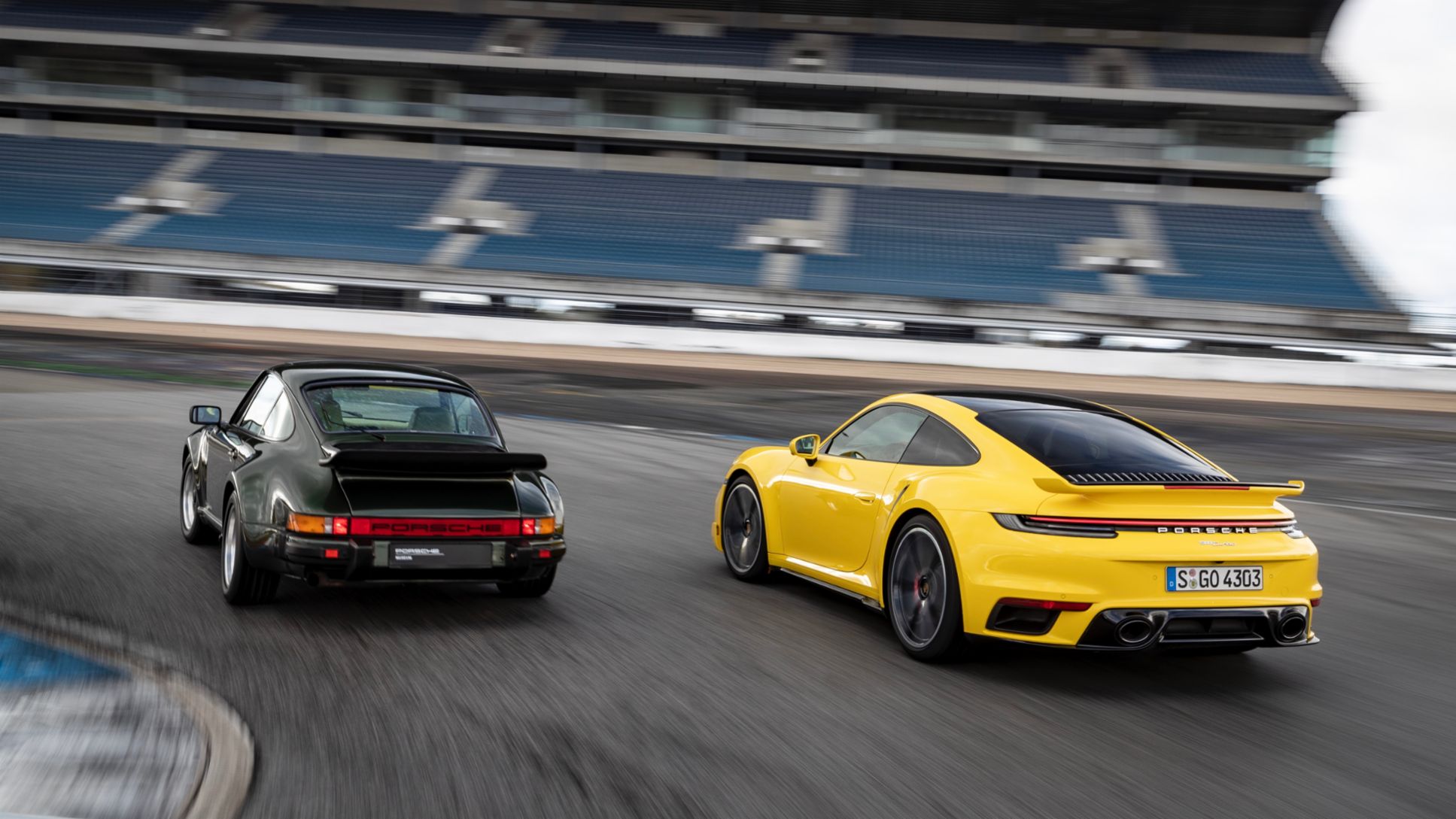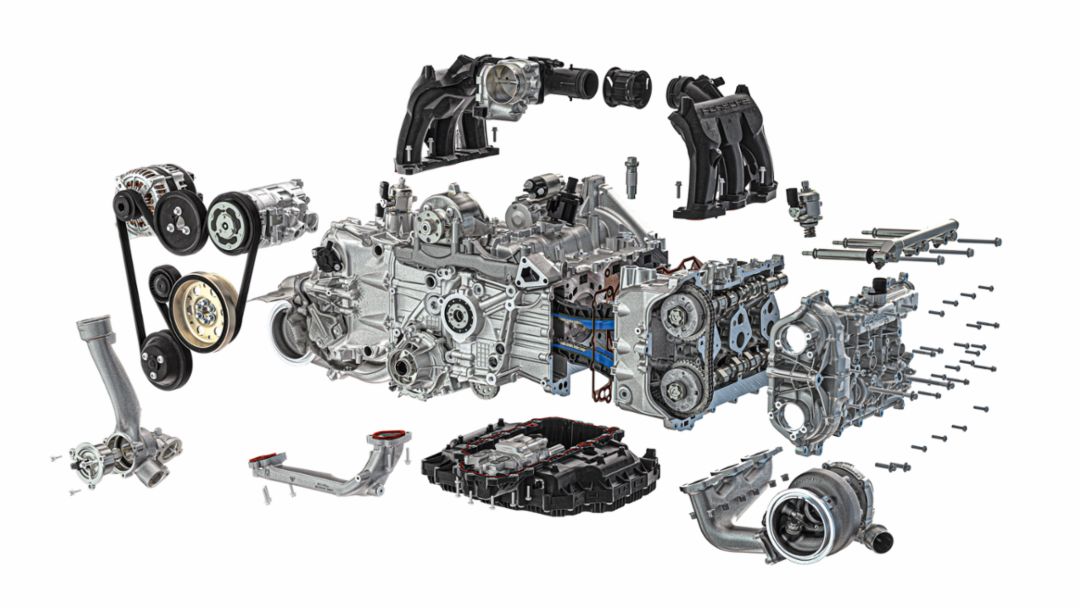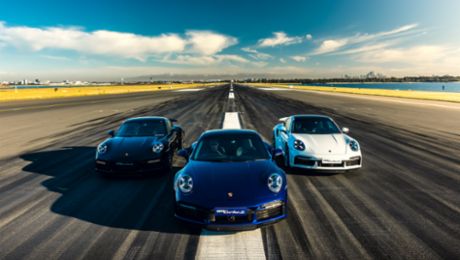Ever since Porsche introduced the Turbo model designation for the 911 flagship 45 years ago, the name has stood all over the world for the fastest, most exciting and best variant. The Turbo has become the synonym for the top-of-the-range model in the same way as Sellotape® stands for sticky tape or Kleenex® for tissues.
A Porsche Turbo is so much more than a model variant though: it is a principle. A Turbo is the spearhead model, the limit of what is feasible. A Turbo is the high flyer in its segment.
“Turbo” also stands for technological leadership at Porsche
At Porsche, Turbo also always stands for technological leadership and the combination of apparently irreconcilable attributes. A Turbo combines driving dynamics with efficiency, builds a bridge from tradition to innovation, and offers uncompromising everyday usability in spite of all its exclusivity.
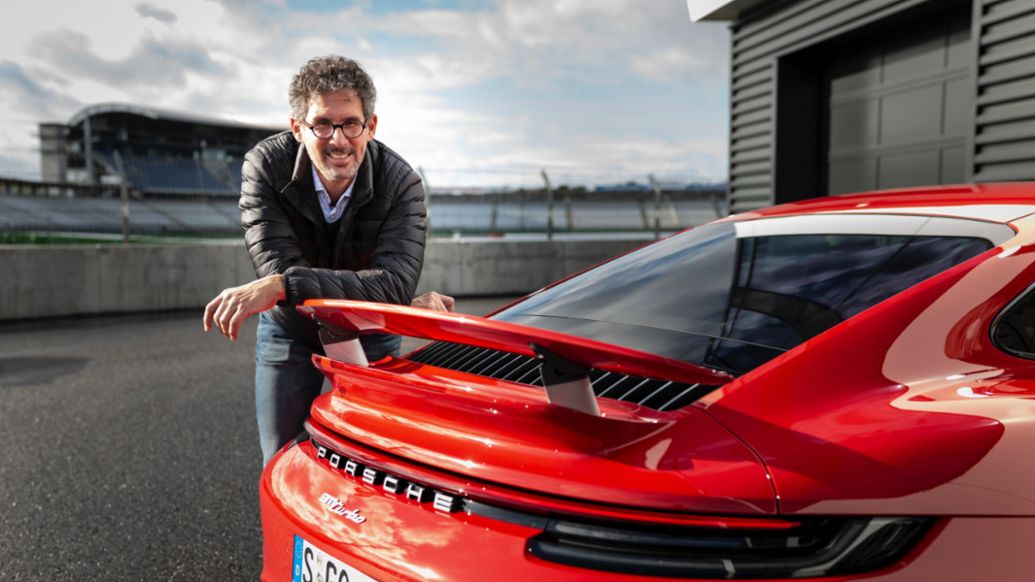
Using the example of the new flagship of the 992 range, Dr. Frank Walliser, Vice President Model Line 911, explains the “Turbo principle” by the standards of those responsible for its development. “A Turbo does not just have to be clearly different in visual terms, but it must above all be possible to really feel the difference. The work to differentiate is therefore correspondingly high, not just with regards to the design, but also to the chassis and the engine,” says Walliser.
The silhouette of the new 911 Turbo is the best example of this differentiation. The combination of large rear wing and front spoiler with the body’s wide wings has always been a distinguishing feature of the especially powerful 911 models – and the latest is no exception.
The newly designed 3,745 cc flat-six engine (911 Turbo S: Fuel consumption combined 11.1 l/100 km; CO2 emissions combined 254 g/km, 911 Turbo S Cabriolet: Fuel consumption combined 11.3 l/100 km; CO2 emissions combined 257 g/km (all as of 12/2020)) also represents a significant step forward in the Turbo S, thanks to a power output of 478 kW / 650 PS* (horsepower). Superior power is not just a traditional feature – it is also a key emotive requirement for a Turbo.
That is also why a Turbo is always a pioneer in the production maturity of new technology. The things that help it to achieve new performance benchmarks will also do the same in the future for other models and generations. Whether it’s all-wheel drive control, adaptive aerodynamics or superior brake technology, a Turbo is always the pioneer.
Pioneering performance in all Porsche product lines
An exciting example of this is the Cayenne Turbo S E-Hybrid. With the combination of a V8 biturbo engine (Cayenne Turbo S E-Hybrid: Fuel consumption combined 3.9 – 3.7 l/100 km; CO2 emissions combined 90 – 85 g/km; Electricity consumption combined 19.6 – 18.7 kWh/100 km (as of 12/2020)) assisted by a 100 kW / 136 PS* (horsepower) electric motor, it does not just offer maximum dynamic performance, but also clearly underlines its claim to be the flagship of the model range.
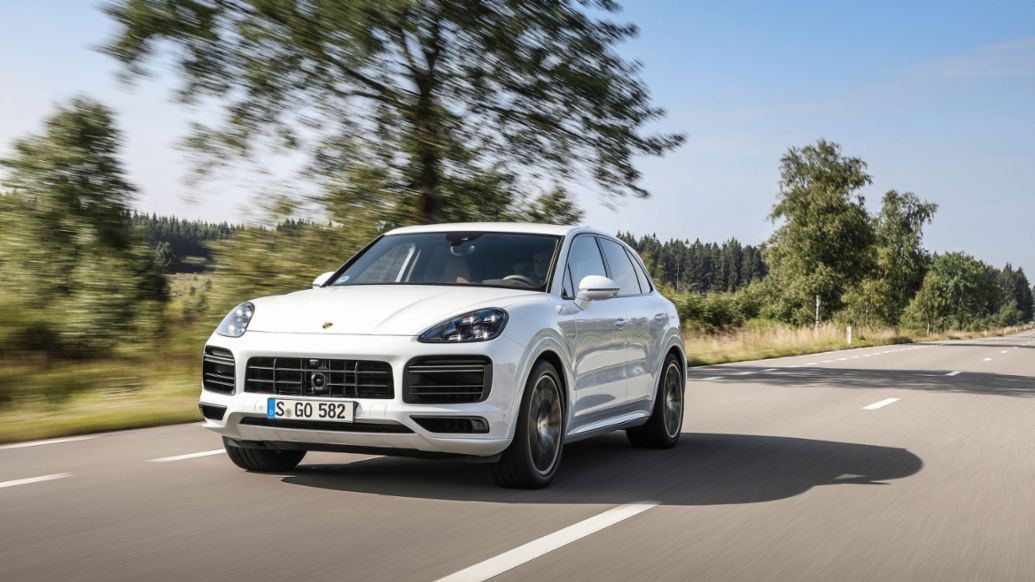
With intelligent performance through the perfect interaction of two powerplants, the Turbo S E-Hybrid is also a technical trailblazer for the future. Thanks to the combination of whisper-quiet electric operation and the potential for spectacular acceleration in Sport Plus mode, the flagship Cayenne is uniquely emotive among hybrids.
The “Turbo principle” also applies to the Porsche Taycan
With the all-electric Taycan in particular, it can be seen that the type designation is no longer restricted to the use of a turbocharger. On the contrary, almost all Porsche models use a turbocharger today but the right to bear the name “Turbo” is reserved for the technological pioneers – the emotive stars ... In the case of the locally zero-emission Taycan Turbo S, this applies first to its Performance Battery Plus and its particularly efficient 600-amp pulse-controlled inverters on the front and rear axles, but also, and above all, to its breathtaking performance (Taycan Turbo S: CO2 emissions combined 0 g/km; Electricity consumption combined 28.5 kWh/100 km (as of 12/2020)).
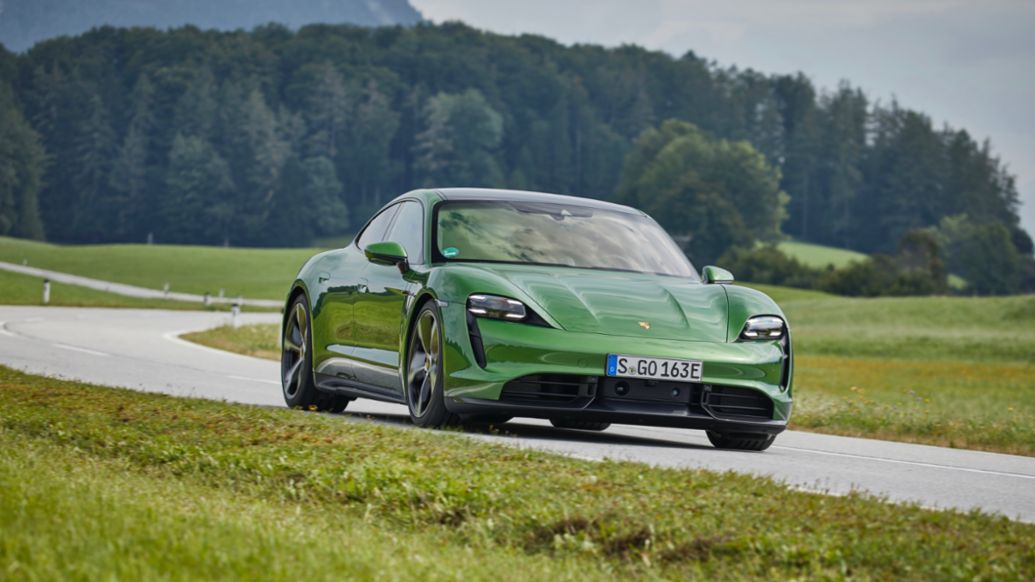
Acceleration from zero to 200 km/h takes just 9.6 seconds and can be repeated practically any number of times while standard PCCB brakes ensure matching braking performance. With 420-millimetre ceramic brake discs gripped by 10-piston aluminium monobloc fixed calipers, the Taycan Turbo S features one of the largest braking systems ever used by Porsche on a production car.
Porsche trio consisting of electric drive, plug-in hybrid and petrol engine
As the former Head of Development for the 918 Spyder, Walliser knows how important it is to push to the limits. For a Turbo in particular, the high level of emotiveness embodied by a technology is always a main argument for its use, particularly if it supports the overall performance of the vehicle.
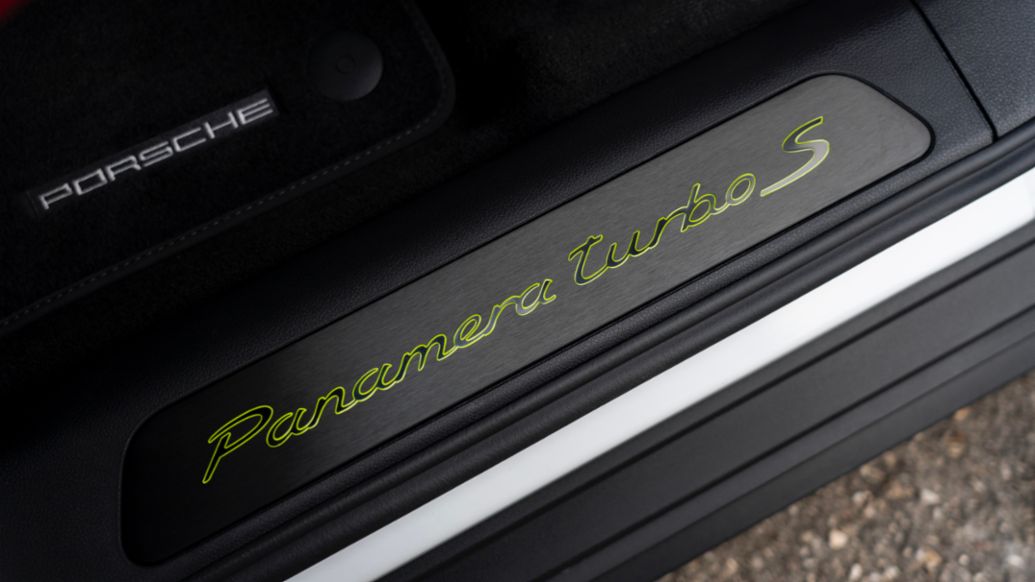
This also explains why the Turbo logo is not only found on the combustion engine variants, but also on the flagship models of the other two drive concepts. Porsche is meeting the challenges of future mobility with a trio of electric, plug-in hybrid and petrol engine powertrains. The clever use of efficient and environmentally friendly technology does not just create greater independence from fossil raw materials, but also generates even stronger emotions.
A Porsche Turbo is always the spearhead in its segment
Porsche Panamera Turbo S E-Hybrid. With a system power output of 515 kW / 700 PS* (horsepower), Panamera Turbo S E-Hybrid models: Fuel consumption combined 2.8 – 2.7 l/100 km; CO2 emissions combined 63 – 62 g/km; Electricity consumption combined 22.8 – 21.8 kWh/100 km (all as of 10/2020)) and 870 Nm of torque, it not only delivers superb performance, but also offers an electric range that has been increased by 30 per cent thanks to its new 17.9 kWh battery. The flagship hybrid model therefore also confirms what has been unequivocally true for 45 years now: a Porsche Turbo is always the spearhead in its segment.
Info
* PS (PferdeStärke, German for horsepower) is the standard unit used in the European Union to measure the power output of a motor in ‘metric horsepower’
